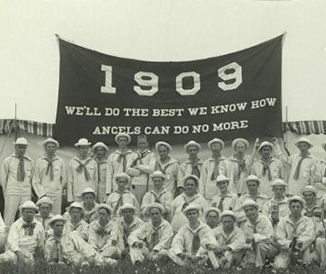
Bryan Mattimore ’76
Notable Achievements: Author of Idea Stormers: How to Lead and Inspire Creative Breakthroughs (Jossey-Bass, 2012) and 99% Inspiration: Tips, Tales and Techniques for Liberating Your Business Creativity (AMACOM, 1993), the American Management Association’s Book of the Year; creator of Bright Ideas game; clients include Kraft, BNY Mellon, Pepsi, Merck
Career: Co-founder and president, Growth Engine Co., Norwalk, Connecticut, 1999-present; founder and president, the Mattimore Group, 1981-99; Product Resources International, Marsteller Advertising, 1976-81
Education: A.B., psychology
Personal: Married to Hazelann; father of Cathryn, 22, Caroline, 19, and James, 17; brother of Patrick Mattimore ’72; son of the late John “Matti” Mattimore ’38; lives in Stamford, Connecticut
“My job is to help companies come up with good ideas—whether for new products or better ways to market existing ones. What could be more fun than that?”
“I backed into my specialty when a friend asked me to facilitate an ‘ideation session’ for Frito Lay.”
“Ideation is different from brainstorming—it’s using a variety of proven techniques with specific stimuli to elicit good ideas. Brainstorming isn’t directed enough. Saying, ‘Have any more ideas?’ isn’t good enough.”
“We spend a lot of the time thinking about the strategic direction of a session, because if you don’t know that, any idea is a good idea. You have to know what the parameters of success are.”
“People are exhausted if we do a full day of ideation. We don’t sing. We don’t hold hands. We don’t have Whoopie cushions. This is hard, strategically directed work. Our techniques are empirically validated approaches.”
“We sometimes ask people for their worst ideas. It’s an extraordinarily powerful technique because people relax and have fun. When I tell people, ‘That idea isn’t bad enough,’ they know they can’t fail by not coming up with a good idea, which is the typical expectation. It’s cathartic.”
“One of our techniques is brain-walking: We stimulate two-person teams with images or target-market wishes or key words. Then these teams rotate among ‘ideation stations,’ writing down ideas as they go. They have to add to the ideas they find or use them to trigger new ones. Introverts love it and people aren’t too intimidated ated to react to an idea, because they have no clue whose idea it was.”
“If I could control only one thing when working with a group, it would be the variety of people participating. I want different ages, different genders, different departments, different thinking styles. I also want the people who will have to execute the ideas.”
“If one group in a session has an expert in it, that group will have the fewest and least interesting ideas. People at that table spend half their time asking the expert questions, and the expert has reasons something new won’t work.”
“We like to get people thinking outside their realm. Sometimes that means stimuli like space shuttle tiles when trying to come up with a new form of skin protection.”
“You don’t innovate by changing the culture. You change the culture by innovating. You find pockets of passion and those start to succeed. Employees want to be part of that.”
“It’s important for managers to come up with creative challenges for their employees rather than say, ‘I wish you’d come to me with more ideas.’ If they are open to ideas, they will become idea magnets and people will want to work for them.”
“What may well distinguish Gen Xers in the workplace is that they aren’t going to stay at companies that don’t value their ideas. We did a project with a major credit card company, and it was clear the younger folks had a million ways to reinvent the business. There was a crust at the top level.”
“It’s a psychological invariable that we want to be in control of our world, so ambiguity makes people nervous. We need to embrace ambiguity, see things in terms of ‘and’ rather than ‘either/or.’ ”
“The hardest assignments we have are when a very well-established brand wants to invent something new. It’s easier to come up with an idea for a new iPod—maybe one that floats in the air?—than a new Oreo.”
“It’s not the innovation process but rather the people side of innovation that is the challenge. That’s the territory that needs a lot more thinking and work.”
“Like a lot of people I have good ideas in the shower or driving to work. I’m somewhat unusual in that I also have good ideas at work. You get pretty fluent at it.”










